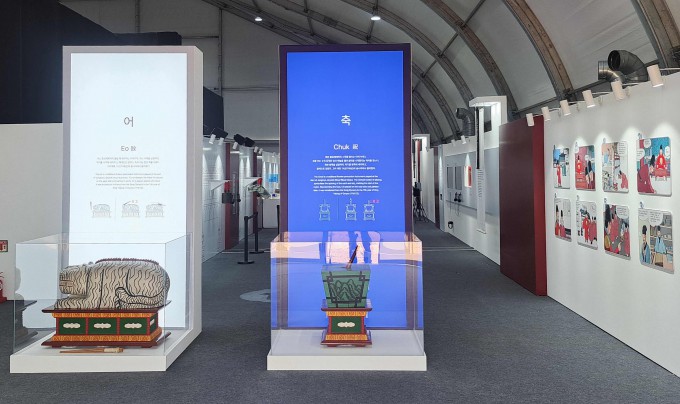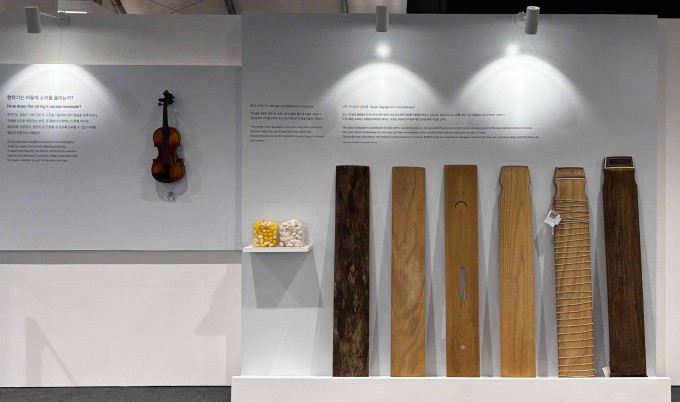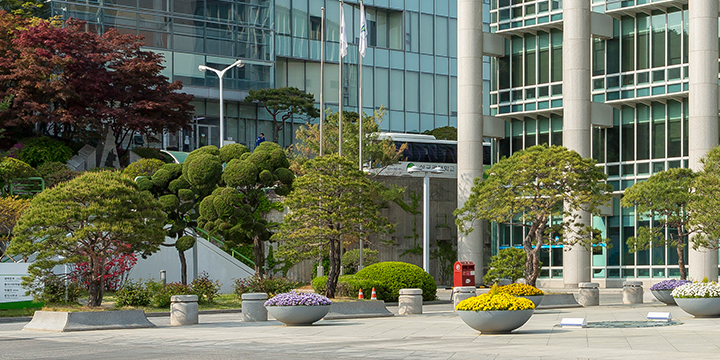Special Exhibition at the Yeongdong World Traditional Music Expo, Hosted by the National Science Museum of Korea — Until October 11.

A special exhibition that explores the scientific principles embedded in traditional Korean music is currently being held.
The National Science Museum of Korea announced on September 12 that it is hosting a special exhibition titled “Resonating Science: Instruments of the Joseon Dynasty” as part of the Yeongdong World Traditional Music Expo, which runs from September 12 to October 11 in Yeongdong County, Chungcheongbuk-do.
The Yeongdong Expo is a global event designed to showcase Korea’s traditional music (gugak) to the world. It features performances from 30 countries and attracts both domestic and international visitors.
This exhibition, located in the Future Gugak Pavilion, was originally presented in London in April 2024 to commemorate the 80th anniversary of the National Science Museum. It is now being shown in Korea for the first time. The exhibit received high praise from local audiences and media, including BBC Radio, for its scientific reinterpretation of gugak.

Three Thematic Sections of the Exhibition
1. Scientific Wisdom in Joseon-Era Music
This section highlights the mathematical rules and scientific principles used by King Sejong and court musician Park Yeon to craft instruments capable of producing precise musical tones.
Park Yeon, a high-ranking scholar and musician born in Yeongdong (the Expo’s host city), played a key role in organizing court music during the early Joseon period and is renowned as one of the “Three Great Masters of Korean Music,” alongside Wang San-ak of Goguryeo and Ureuk of Silla. He is also credited with contributing to the creation of the Korean musical notation system, Jeongganbo.
2. The Physics of Sound in Korean Instruments
This section explores the physical principles behind the unique sounds of traditional Korean wind, string, and percussion instruments. It introduces how materials such as paulownia wood, reed, and silk thread influence the acoustic characteristics of each instrument.
(Photo: Exhibition area exploring the physics of Korean instruments – provided by the National Science Museum)
3. Gugak Meets Artificial Intelligence
The final section presents a collaborative project involving the National Gugak Center, Korea Institute for Advanced Study (KIAS), POSTECH, and KAIST. It showcases AI-analyzed and AI-composed gugak pieces, offering a glimpse into the fusion of traditional art and modern technology.
Visitors can experience this new form of gugak where AI and traditional Korean music intersect.
Hands-on Activities and Special Events
Visitors can also participate in a variety of interactive experiences, such as making and playing a Hwangjong yulgwan — a traditional wind instrument used to produce the standard pitch “Hwangjong” in the gugak scale.
On September 13, a special event titled “Science Meets Gugak: AI-Composed Korean Music” will be held. Participants will have the opportunity to analyze gugak through a mathematical lens and observe how AI composes music, under the guidance of Professor Jaehoon Jung of POSTECH.










 ?php echo aslang('alert','is_login_service'); ?>
?php echo aslang('alert','is_login_service'); ?>




.png)











